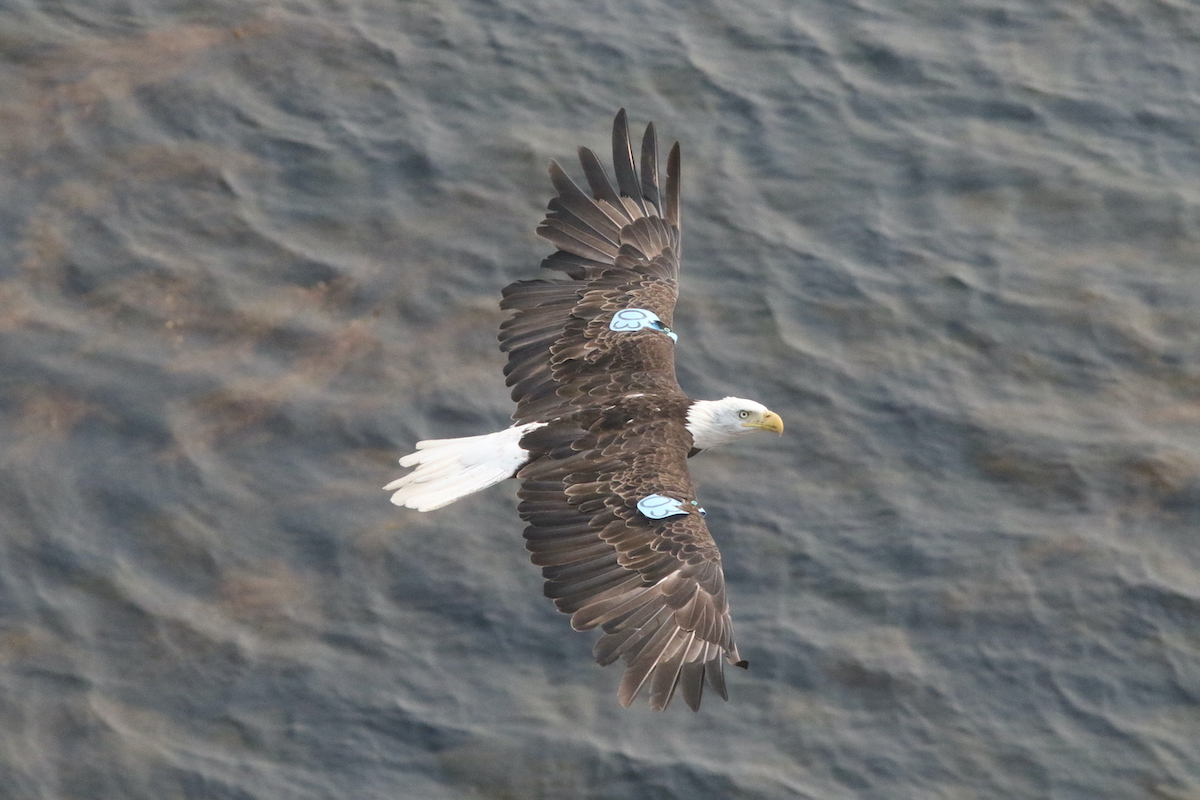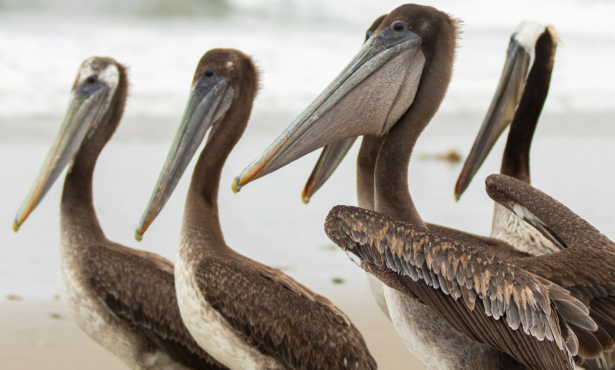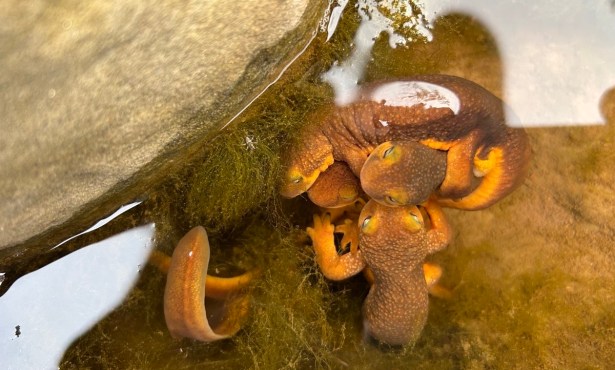Two Bald Eagles Take Up Residence at Scorpion Anchorage
Species Restoration Efforts Doing Well at Santa Cruz Island

The common murre never stood a chance. The steely gaze of a bald eagle zeroed in on the unsuspecting seabird from the honeycombed cliffs fortifying Scorpion Anchorage on the southeast fringe of Santa Cruz Island. Within seconds, the baldie took flight and snatched the murre effortlessly from the choppy seas before returning to a craggy boulder to feast.
In recent years, this has become a more regular scene from the seat of a kayak at the largest isle in the Channel Islands National Park. Long-running restoration efforts ― coupled with pier reconstruction and a silver lining of the COVID-19 pandemic, which temporarily halted visitation ― opened the door for these iconic raptors to reclaim historic habitat.

Virtually every day, a majestic 4-year-old male bald eagle, fitted with blue shoulder tags, can be seen antagonizing flocks of western gulls over Scorpion Rock, plucking fish from the cobalt seas, and preening his brilliant feathers. He’s known as A-03, and he’s a prime example of bringing the Northern Channel Islands, or NCI (Santa Cruz, Santa Rosa, Anacapa, and San Miguel) back to a natural balance.
“A-03 hatched at the Fraser Point nest on western Santa Cruz in 2017,” said Dr. Peter Sharpe, a wildlife biologist with the Institute for Wildlife Studies (IWS), who has been instrumental in returning these raptors to the islands. “We’ll have to keep an eye on the Scorpion area next year.”
What Sharpe means is that A-03 is not alone. Over the last seven months, the raptor has been keeping company with a subadult eagle with mottled feathers, which makes it more difficult to spot against the multicolored cliffs.
Sign up for Indy Today to receive fresh news from Independent.com, in your inbox, every morning.
Currently, not a lot is known about this young raptor. Researchers initially thought it might be the offspring of A-03. But after examining recent photos, it has been determined that the anonymous youngster is too old. So, it’s possible the two eagles might be prospective mates. “The Scorpion area is wide open for a pair to move in,” continued Sharpe. “The closest nests are eight miles away on the north shore, and 3.5 miles away on the south shore.”
Bald eagles disappeared from the NCI by the 1950s due to egg collecting, hunting, and the effects of DDT that was dumped into the pelagic food web. Since 2002, the National Park, The Nature Conservancy, and the Institute for Wildlife Studies have worked diligently to bring them back.
Bald eagles are monogamous birds, coming together to breed, nest, and raise eaglets year after year. In 2021, there were 12 known breeding pairs on the NCI that produced 14 fledglings. There are at least another 10 individuals that are young or non-breeding birds.
As I sat in my kayak watching A-03 gaze across a thick canopy of giant bladder kelp, I waited patiently for him to take flight and extend his impressive wingspan toward potential prey. Soon he was soaring overhead. I followed him with my zoom camera lens until he was a mere speck through my viewfinder, the vast ocean realm his to command.
Support the Santa Barbara Independent through a long-term or a single contribution.




You must be logged in to post a comment.